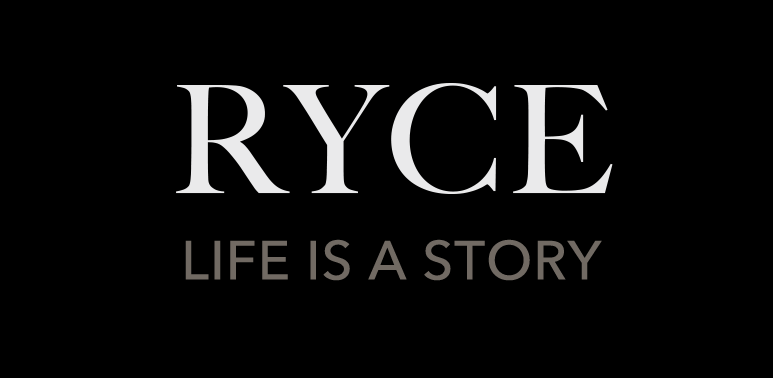Why marvelling at nature might be exactly what you need

There are some things in this life that are worth connecting to. Mysteries that boggle the mind, secrets that cause the mouth to gape open and our eyes to widen, and enigmas that offer some respite from our daily grind.
Things that are bigger than us.
In 1976 an African American kid from the Bronx was fresh out of high school with dreams of becoming a scientist. He was just seventeen when he sent off his college applications and was soon accepted to Cornell University in Ithaca.
What the young student did not know, was that the admissions office sent his application to Carl Sagan, who was not only a famous astrophysicist at the time but was also the leading Professor of Astronomy and director of the Laboratory for Planetary Studies at Cornell.
Shortly after, Sagan sent the young man a letter offering to show him around the labs on campus.

The excited young student had to pinch himself. After all, Carl Sagan had been one of his heroes since he was eight years old. He met Sagan two weeks later on a snowy Saturday morning and was given a tour of the labs. During the tour, Sagan handed the young man a signed copy of his book, “The Cosmic Connection.” When the student opened the book he noticed it was inscribed “to a future astronomer.”

At the end of the day, Sagan drove the young man back to the bus station. The snow was falling harder and it looked as though the roads might be closed. Sagan wrote his home phone number on a piece of paper and said, “If the bus can’t get through, call me. Spend the night at my home with my family.”
That young man was Neil deGrasse Tyson. Today he is an Astrophysicist and arguably as famous now as Sagan was during his era. Tyson eventually decided on Harvard for his undergrad, but has always remembered that special meeting.
“I already knew I wanted to become a scientist, but that afternoon I learned from Carl the kind of person I wanted to become. He reached out to me and to countless others, inspiring so many of us.”
Race and a generation may have separated the two scientists, but their love for the Universe was bound by a mutual respect and admiration of astronomy. When Carl Sagan began his original PBS series “Cosmos: A Personal Voyage” in 1980, he approached it with that same sense of awe and wonder, inspiring millions of people around the world and becoming the most recognisable scientist on the planet.
And one thing Sagan taught us is that science is the poetry of reality …
“Our contemplation of the cosmos stirs us; there’s a tingling in the spine, a catch in the voice, a faint sensation as of a distant memory of falling from a great height, we know we are approaching the grandest of mysteries.” — Carl Sagan
There is only so much ‘wow factor’ in our own reflections
We are now so predisposed towards narcissism that we barely see the mechanics of it at work. In fact, we are living through a narcissism epidemic. Materialistic attitudes have exploded. Grandiosity and self-focused personalities are on the rise as we compare, judge and seek approval — striving to be noticed and taken seriously in a world now shaped through social media and driven by celebratory status.
But our self-image has become a false sense of awe and it’s creating a wedge between how we see ourselves and our connection to nature.

Let’s consider the Greek tale for a moment. Narcissus was a proud hunter, in fact he was so proud that he disdained those who loved him. Nemesis took note of his behaviour and drew Narcissus to a pool of water, where upon seeing his own image he became obsessed. And there he stayed, unable to tear himself free from his reflection until he eventually lost his will to live.
Social media has become our pool of water, and for the most part, it reflects back images of others and ourselves. There are more selfies now on Instagram than ever before, with 1 billion monthly active users, up from 800 million in September 2017. And the app is one of the most popular social networks worldwide.
Saying we enjoy looking at images of ourselves would be a gross understatement.
But this self-obsession creates a vicious cycle, including a need to navigate social hierarchies. It’s called a hierometer theory, resulting in a menagerie of self esteem issues, mental illness, cyber bullying and prejudice. And remember, in order for narcissists to see themselves as superior, they must, by definition, view others as inferior.
To see the world with childlike eyes, first takes a willingness to look beyond ourselves
I’ve often wondered why the happiest people I know are often travelers. I have a good friend who’s been in constant travel mode for years, and she’s highly spirited and always wears a smile.
I asked her, “How do you do it?”
She replied, “You just gotta give it up and let go.”
For a long time I didn’t truly understand what she meant by ‘give it up.’ But then one day I realised, she is constantly being inspired and influenced by the world around her, not by society. Moreover, social pressures or status do not define her, and her inspiration doesn’t come from a meme — it comes from her interactions with real people in the world.
If our only inspiration comes in the form of motivational quotes and memes via our smart-phones and social media, we are depriving ourselves of truly authentic experiences.
When I visited Iceland in 2010 I witnessed an awe-inspiring display of The Northern Lights, or the Aurora borealis. I was staying in a cabin out near a place called Hofsós, an old trading port in the north end of the island. During my stay a friend came to visit, and one night I heard a scream. I ran outside to see what was wrong, but she wasn’t afraid or in danger, she was screaming in awe.

An enormous blanket of green luminescence loomed over the tiny house, spreading back as far as the nearest mountain peaks and nesting into some clouds above the headland. I remember standing there, shivering from the cold, gazing up as the lights danced above us like some distant spirits.
I had no words and no thoughts invaded my mind. In that moment I was, in a very real sense, of no mind.
During such moments, we allow ourselves to escape the confines of our conditioned minds; monkey minds that are restless and have been trained to judge and analyse … post and validate. We repack our minds with pure wonder, as if the words “WOW wow wow wow …” are being repeated on a loop as we take in the splendour. This sense of awe is the ability to see the world through untainted, childlike eyes. And when we’re curious we are open to inspiration that captures our imagination.
Consider how astronauts feel when viewing our tiny, fragile blue world, hanging in the void and protected by a paper-thin atmosphere. This is called the overview effect, a cognitive shift in awareness caused by the reality of witnessing the Earth in space. And similar effects can happen to people travelling at high altitudes, like a desirable vertigo.
But not only are these wow moments inspiring, they do something to the chemical soup in your brain. Your happy neurochemicals kick in and release a shot of dopamine and serotonin. You become energised, motivated and feel a warm and fuzzy pleasure reward. In short, to be awed is to be healthy.
1976 the young Neil deGrasse Tyson could’ve easily become derailed. Civil rights movements were erupting into violence, racial tensions were high, and protests and riots threatened to tear the country apart. But when that young man gazed up at the night sky, he understood that nature dwarfed our human indifferences, belittled our egos and prejudices, and it was enough to inspire him to follow his dreams.
Because it’s bigger than all of us.
And best described by this picture.

“Our posturings, our imagined self-importance, the delusion that we have some privileged position in the Universe, are challenged by this point of pale light. Our planet is a lonely speck in the great enveloping cosmic dark. In our obscurity, in all this vastness, there is no hint that help will come from elsewhere to save us from ourselves.” — Carl Sagan
The late Carl Sagan believed that a sense of wonder was paramount if we were to evolve into a more unified species. For Sagan, science was far more than equations and physics — it satisfied something more intrinsic … that we could experience a sense of awe through a multitude of mediums, as long as we continue to learn. What he called, the innate and insatiable curiosity of the human species.
“Somewhere, something incredible is waiting to be known.”
This article was written by Jakob Ryce and originally posted on Medium.






Leave a comment